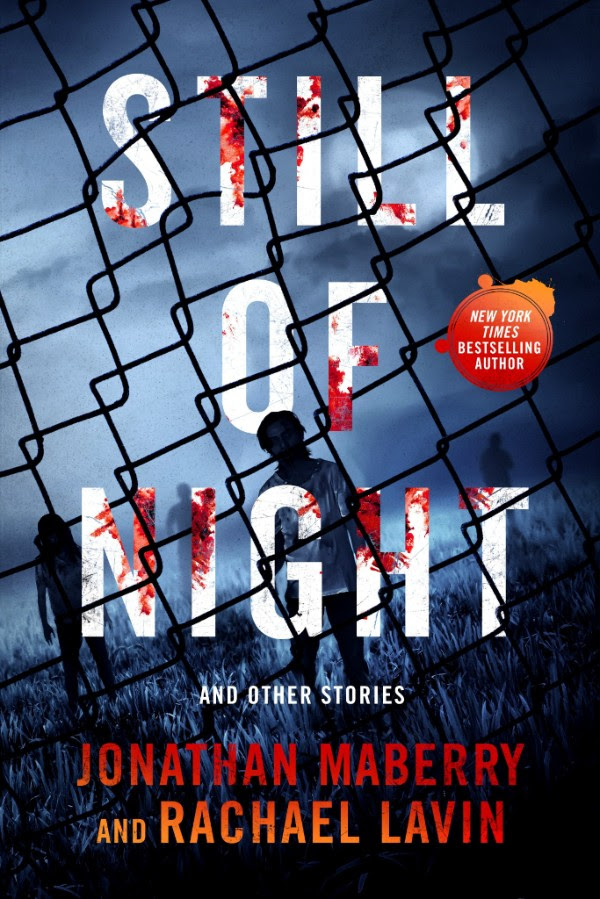 Rio Youers is a highly regarded newer writer, although not quite as new as I’d thought — some quick research showed that Dark Dreams, Pale Horses, his recent collection from PS Publishing, is his fifth book, preceded by three novels and a novella. Dark Dreams acts as a fine introduction to Youers’ work, gathering six stories, half of them on the long-ish side, and allowing him to employ a variety of styles and attack a number of different subjects.
Rio Youers is a highly regarded newer writer, although not quite as new as I’d thought — some quick research showed that Dark Dreams, Pale Horses, his recent collection from PS Publishing, is his fifth book, preceded by three novels and a novella. Dark Dreams acts as a fine introduction to Youers’ work, gathering six stories, half of them on the long-ish side, and allowing him to employ a variety of styles and attack a number of different subjects.
Youers flexes his auctorial muscles most impressively when trying his hand at post-apocalyptic tales, three of which are collected here. First up is “Pure,” which is set largely in the teeming slums of Rio de Janeiro in 2064. The protagonist is part of an underclass whose ancestors were infected by a vampiric plague, and who are now marked with facial tattoos to help identify them and keep them quarantined. Youers expertly evokes the misery of the milieu:
“These streets, as crowded as a child’s imagination, once filled with color and vibrancy, but now made gray by clouds of fear; thunderhead of disease. The locals—the cariocas—pressed to get out of the rain, heads down, bodies wet. They did not look at him.”
“Pure” is perhaps the best story here, a gripping work that’s further enhanced by the unexpected turns it takes.
In “Alice Bleeding,” the catastrophic near-extinction event is a huge meteor strike in Australia. A group of survivors elect to stay behind in the Outback when the other residents of their small town head for more populous areas in hopes of finding aid. Their decision proves to be even more disastrous, as supplies dwindle and no rescuers come:
“In the semi-desert west of Yulara, across the ruptured highway, the letters SOS had been spelled with the detritus of aftermath: furniture and timbers, siding and appliances, carpets and vehicles, towels and bedding, tiles and panels. The letters were forty feet long—the industry of the remaining townspeople, those too foolhardy or stubborn to evacuate. They pillaged the ruin for any morsel of hope. They dragged their findings across the highway and anchored them to saviour. SOS.”
The final tale of cataclysm is “Chrysalis,” a dark fantasy detailing the stubborn observance of religion in a despair-filled world where the sun no longer shines, and a seeming miracle that perhaps rewards the enduring faith. Youers’ prose is again worthy of quotation:
“Imagine the world as a diseased heart. A pale shape hanging in the substance of time, tumbling on its axis: a distorted sphere, like a swollen eye. The grey flesh of the ocean rages, unimaginable depths swirling with muscular movement. Contaminated waves break against the earth’s skeleton, delivering scores of the dead. The forests are broken toys. They lie in pieces, slick with rainfall.”
Among the trio of non-apocalyptic tales, “This is the Summer of Love” certainly merits mention, a bittersweet tale of young lovers Billy and Terri in a relationship that’s headed for disaster as surely as a train with no brakes. Even though the story meanders at times and ends somewhat arbitrarily, Youers’ descriptions again show his flair:
“Home is five rooms held together by tattered boards and siding. The structure leans to the east and has bowed on that side. It has swollen, like an infected limb. The windows are smeared with neglect. They let little light in, and no darkness out. They hide the loss of hope, the creaking floorboards, and the shadows that crowd the seam of light under the doors.”
“The Ghost of Lillian Bliss” revolves around an aging Alzheimers’ patient’s wistful recollections of a ghost she knew as a girl. The only somewhat disappointing story here is “Promised Land Blues,” in which an obsessed Elvis Presley fan gets far more than he bargained for when he arranges to drive a vintage pink Cadillac across the country.
Dark Dreams, Pale Horses is the tenth volume in PS Publishing’s Showcase series, and it’s a perfect fit for that series descriptor, given that the collection serves as an ideal showcase for Youers’ substantial skills.
- CROGIAN - August 17, 2013
- Dark Dreams, Pale Horses - November 25, 2012
- Black Horse and Other Strange Stories - August 13, 2012
- Sudden Death Overtime - August 13, 2012
- Pray to Stay Dead - August 13, 2012
- Acheron - August 13, 2012
- The Female of the Species - August 13, 2012
- Deadfall Hotel - April 17, 2012
- Terra Damnata - April 17, 2012
- Lest You Should Suffer Nightmares: A Biography of Herbert van Thal - November 9, 2011







